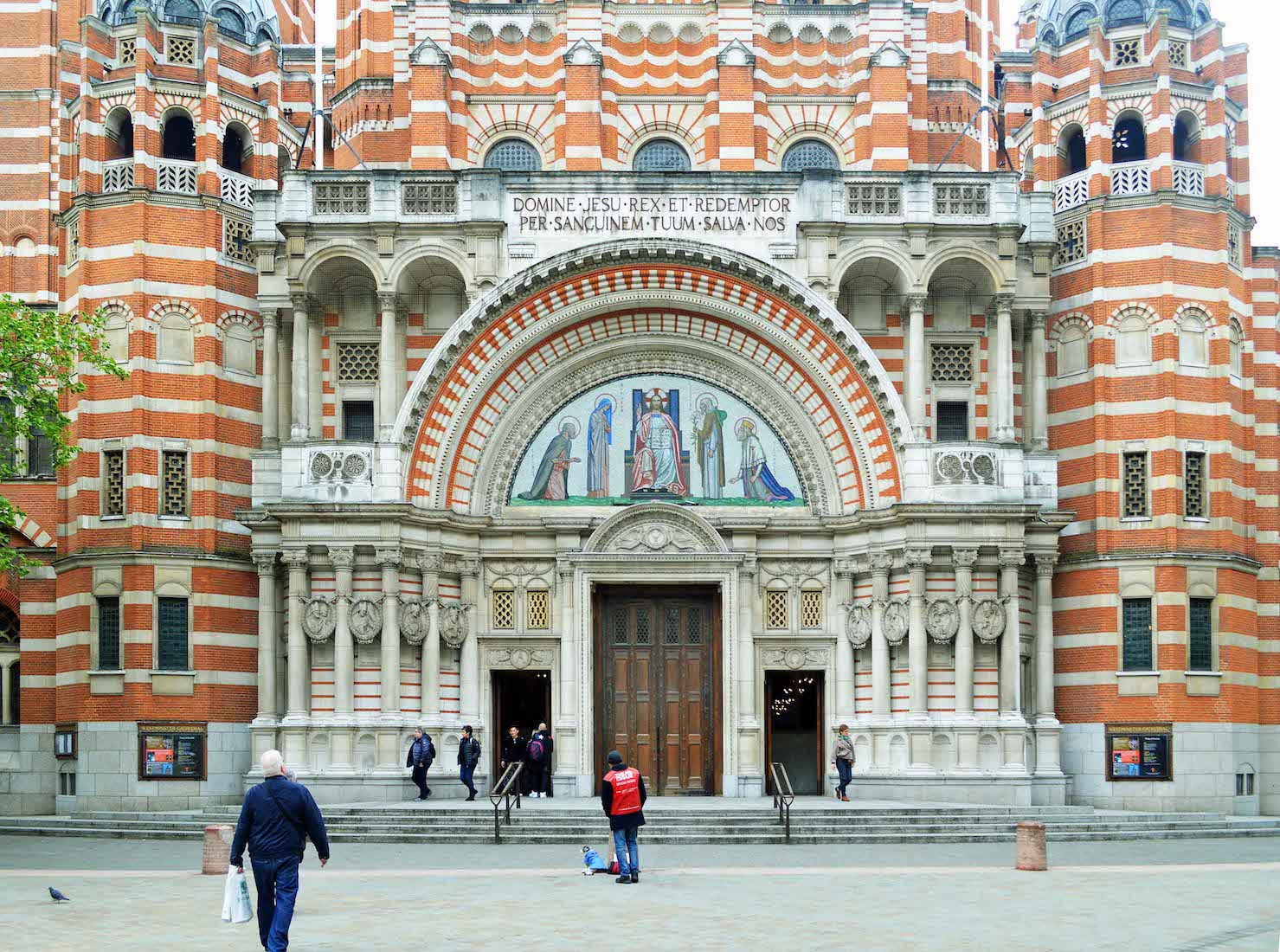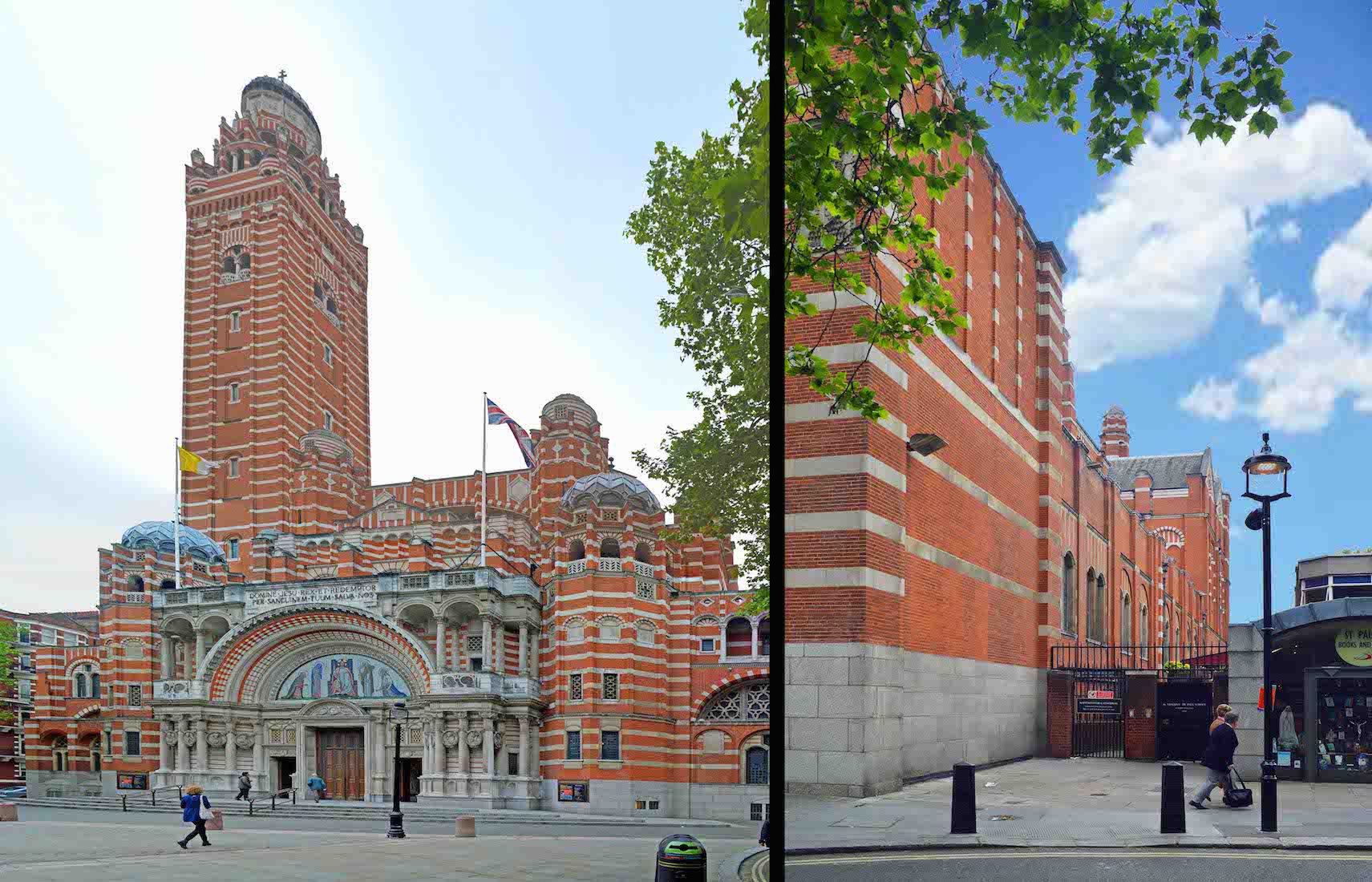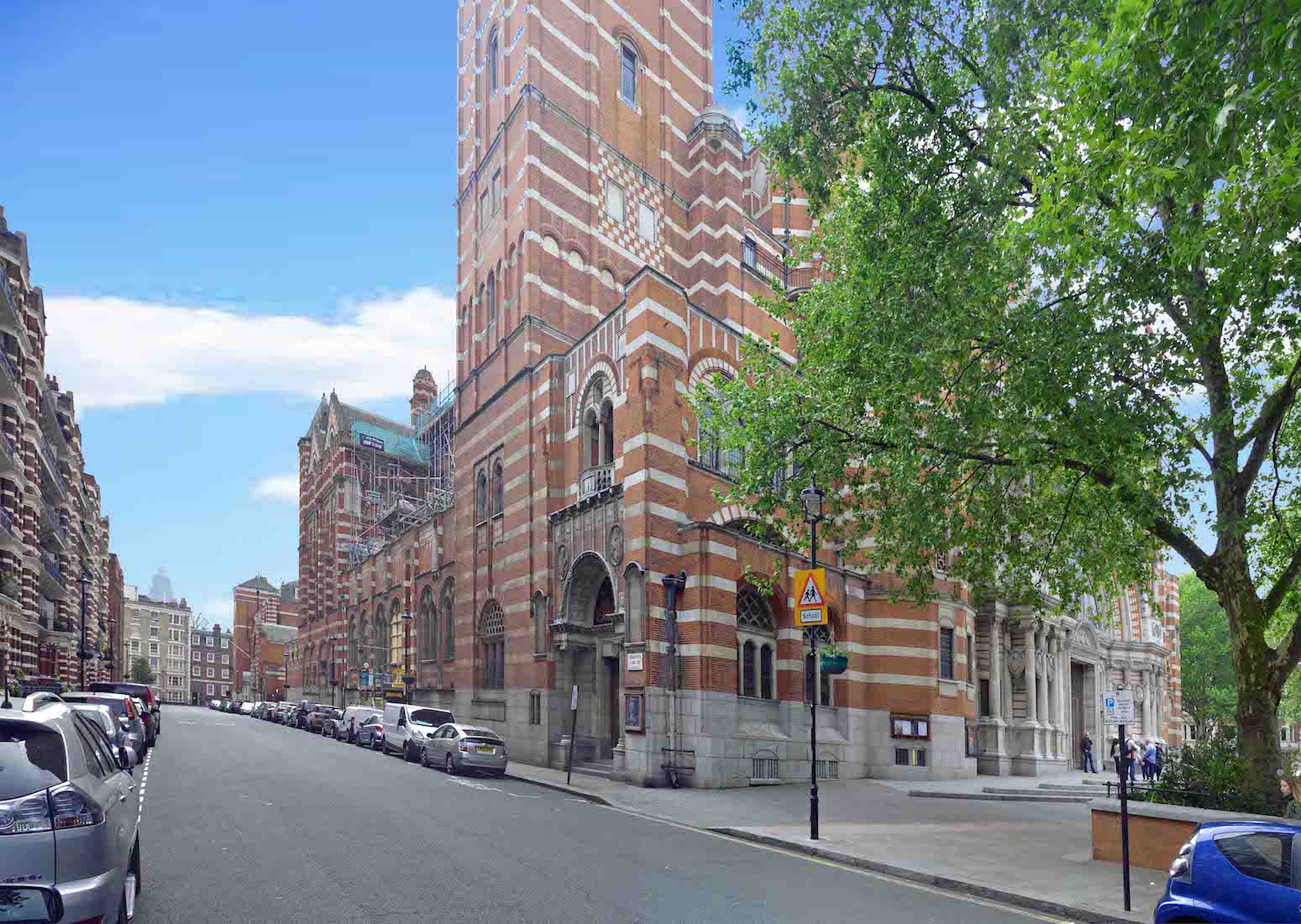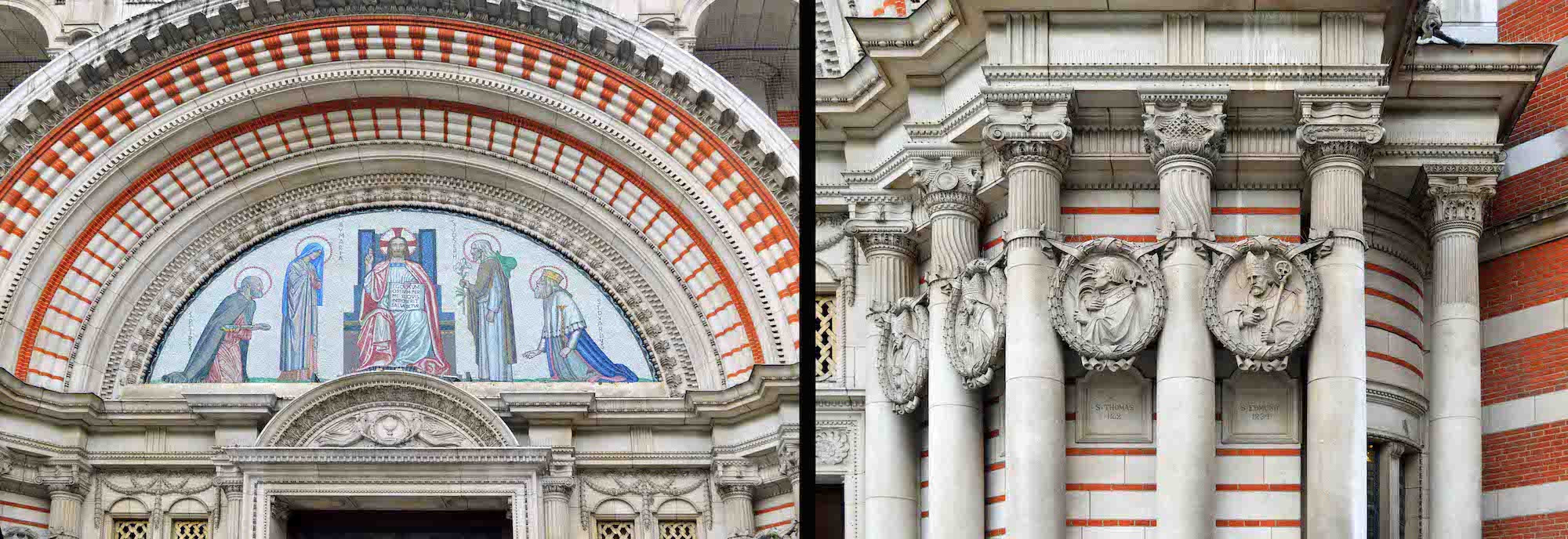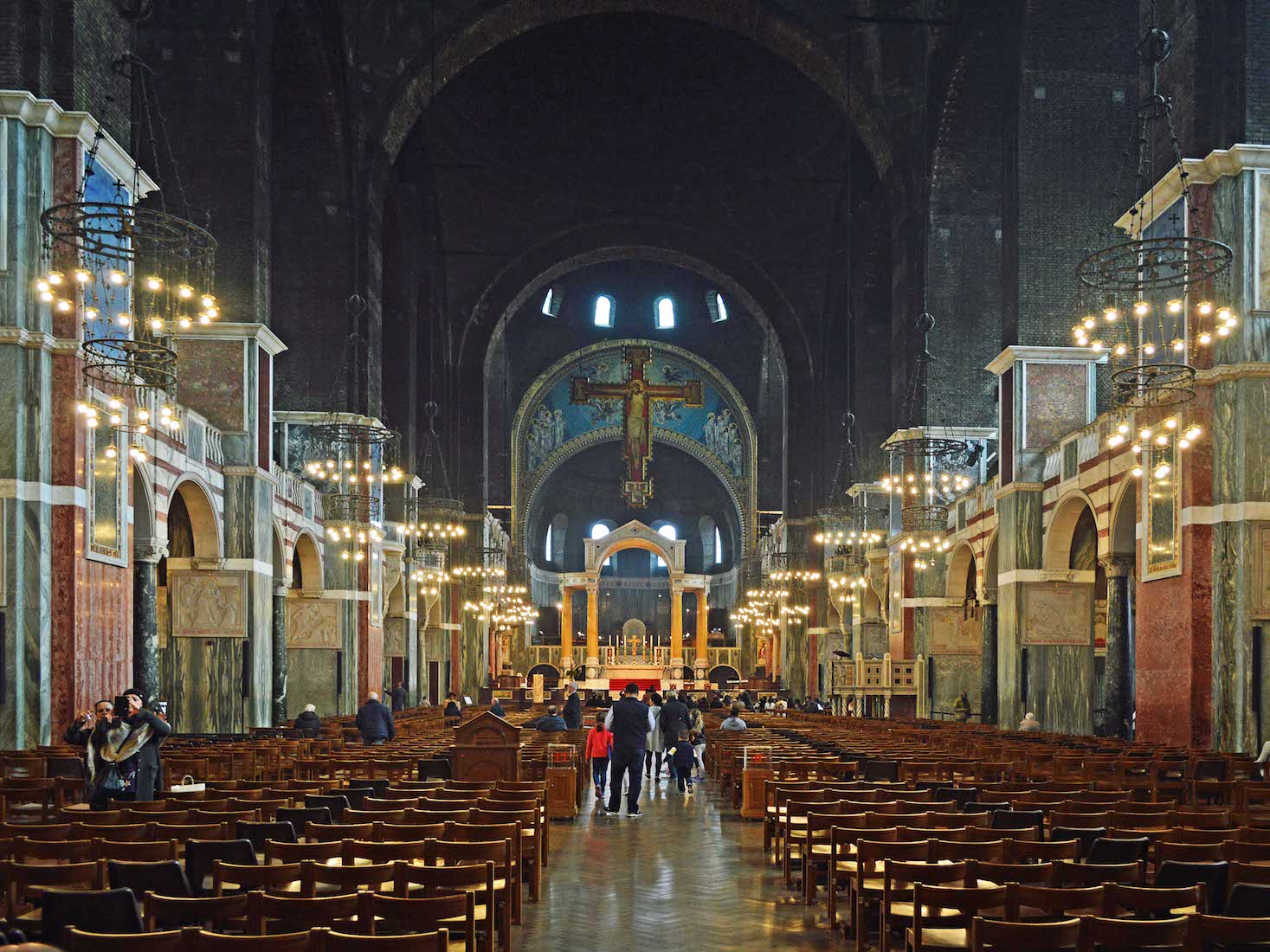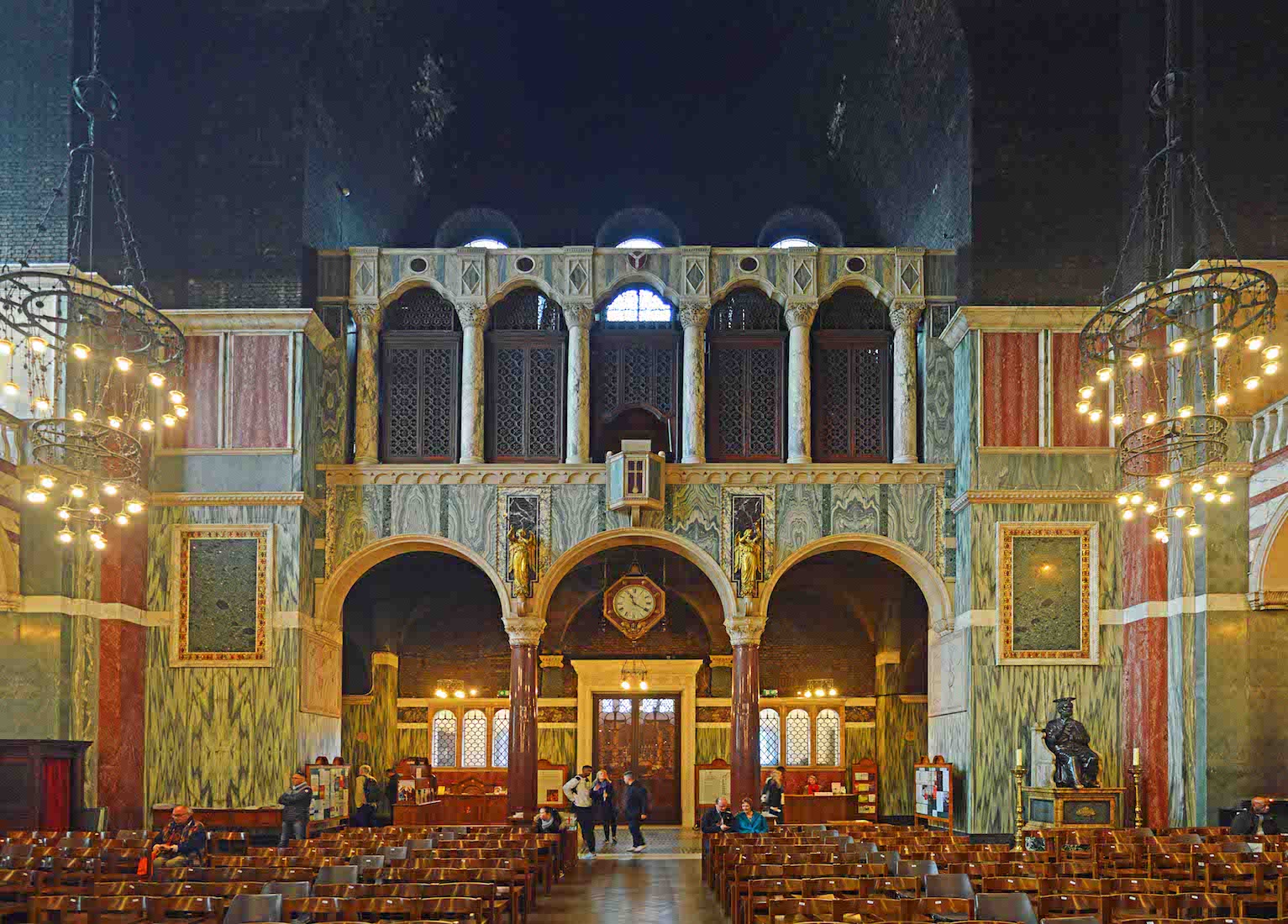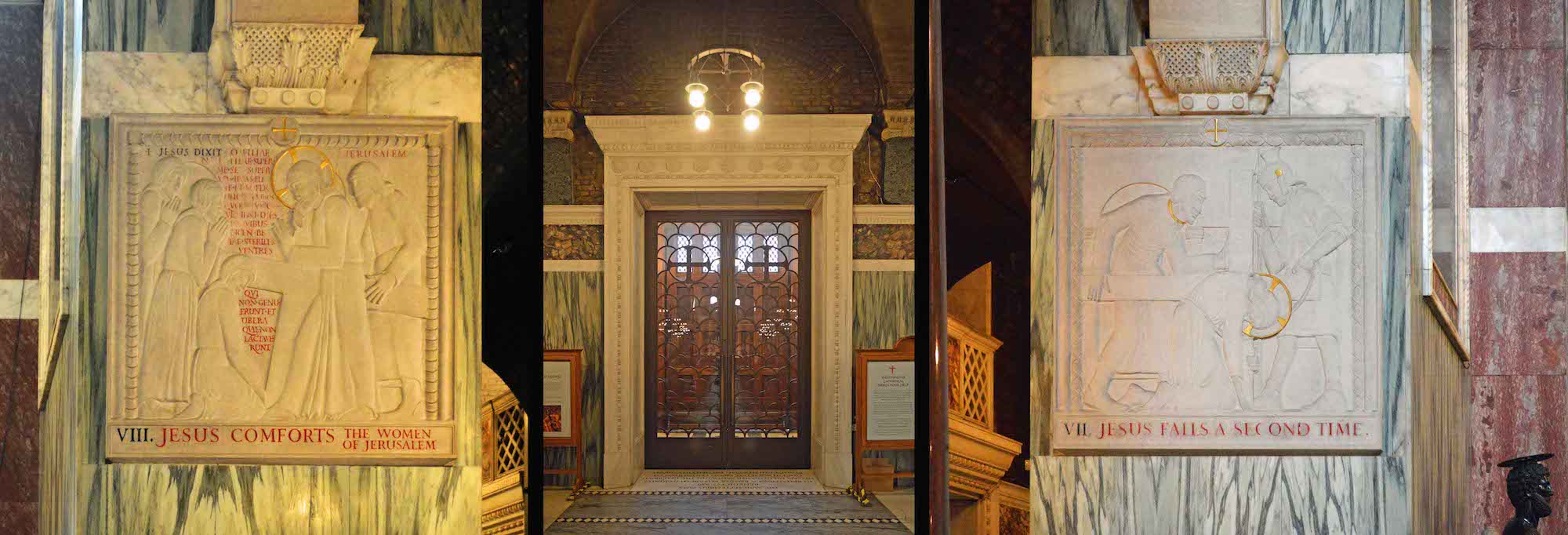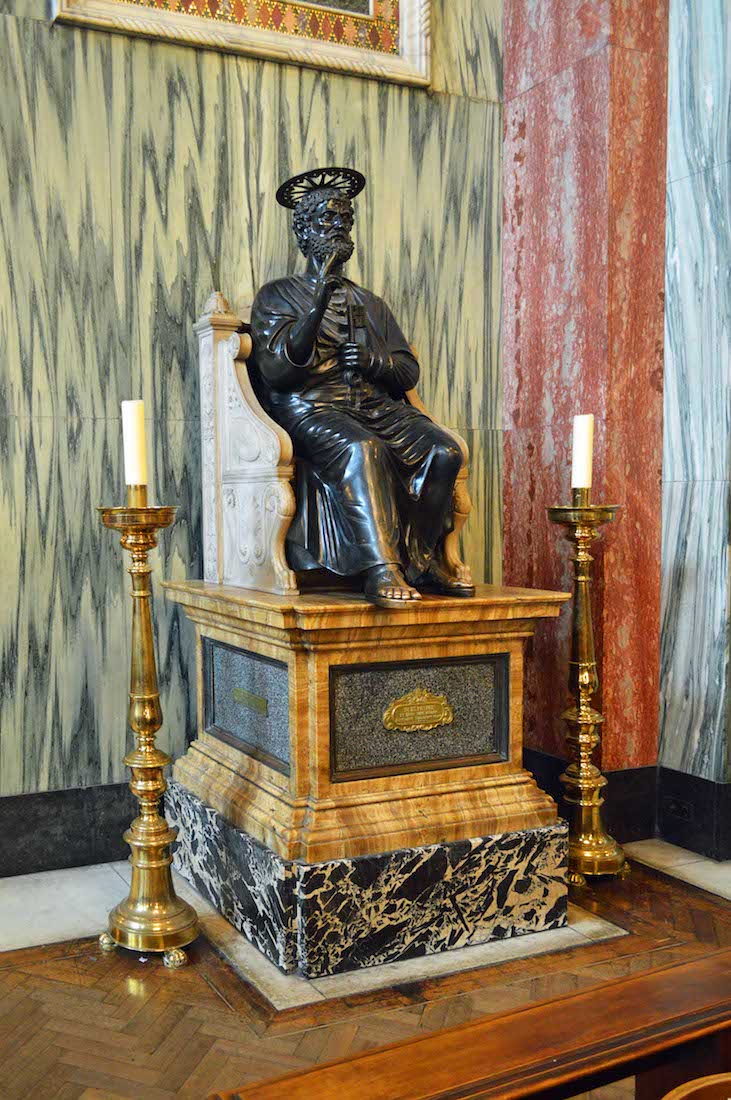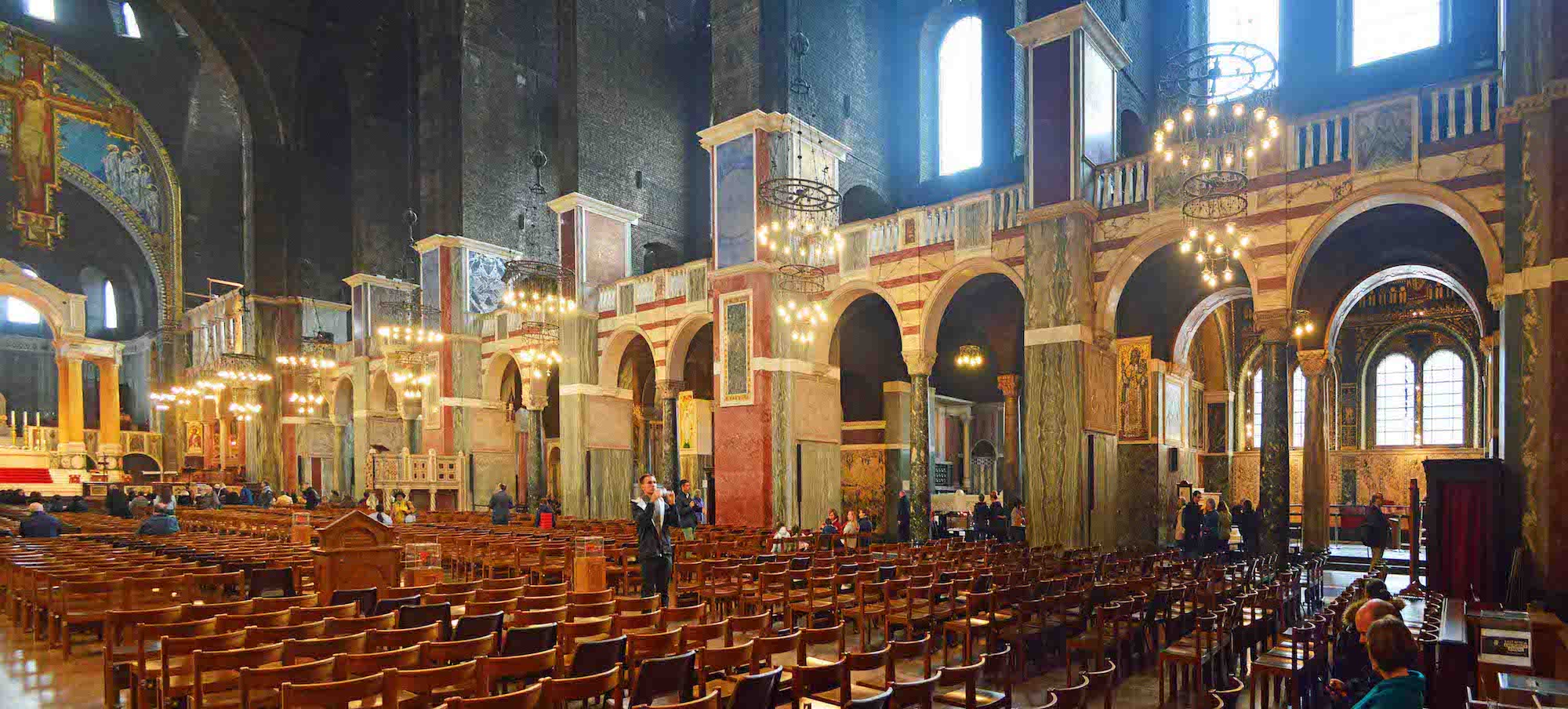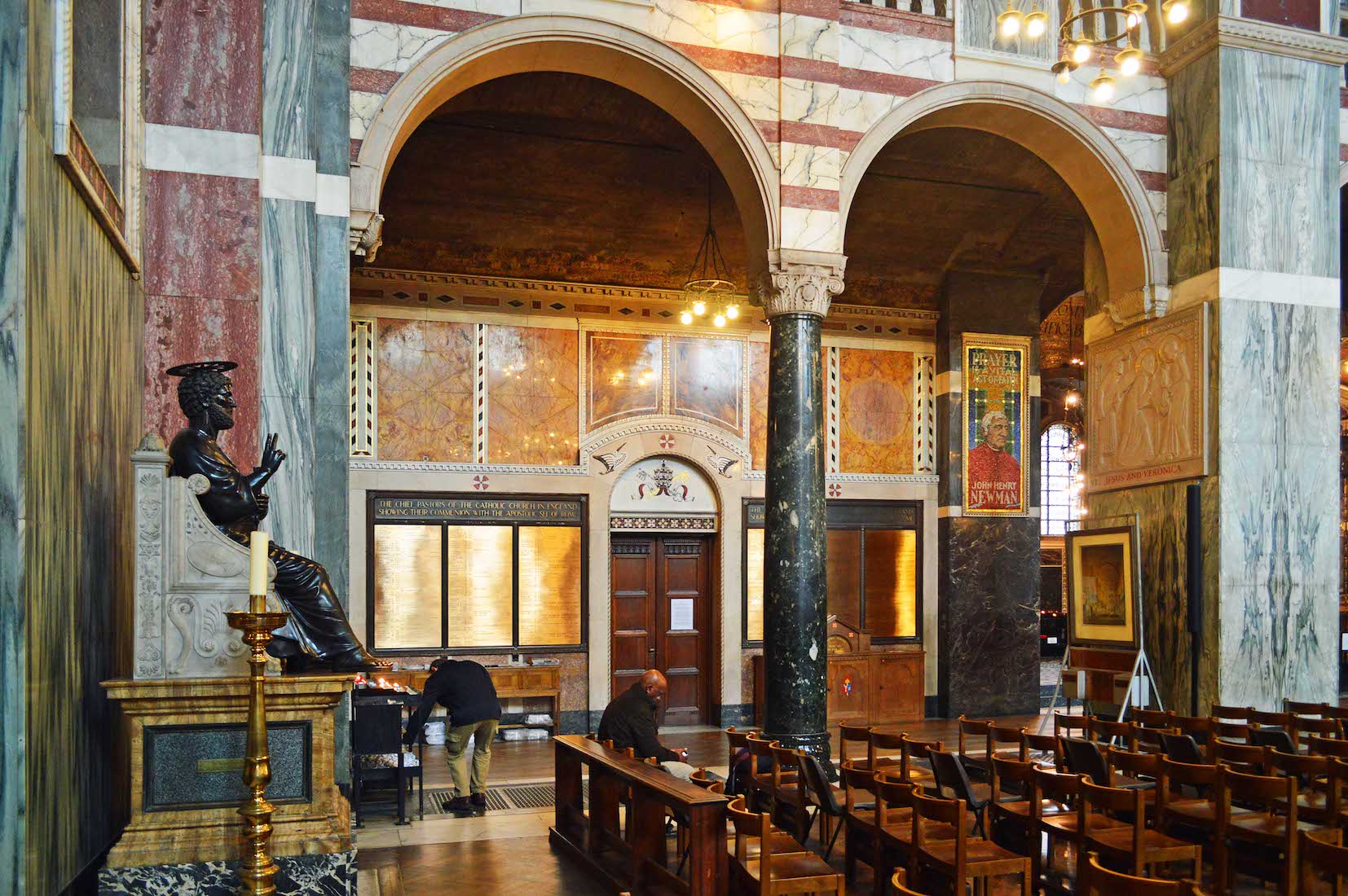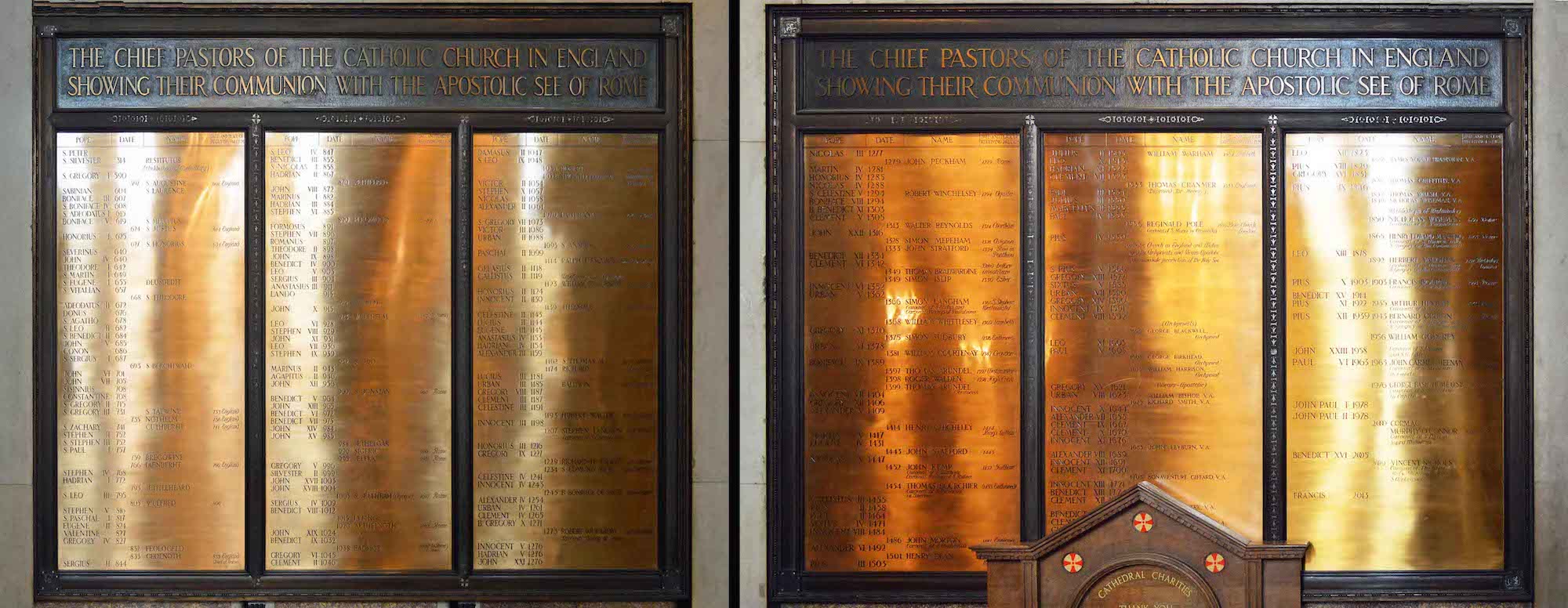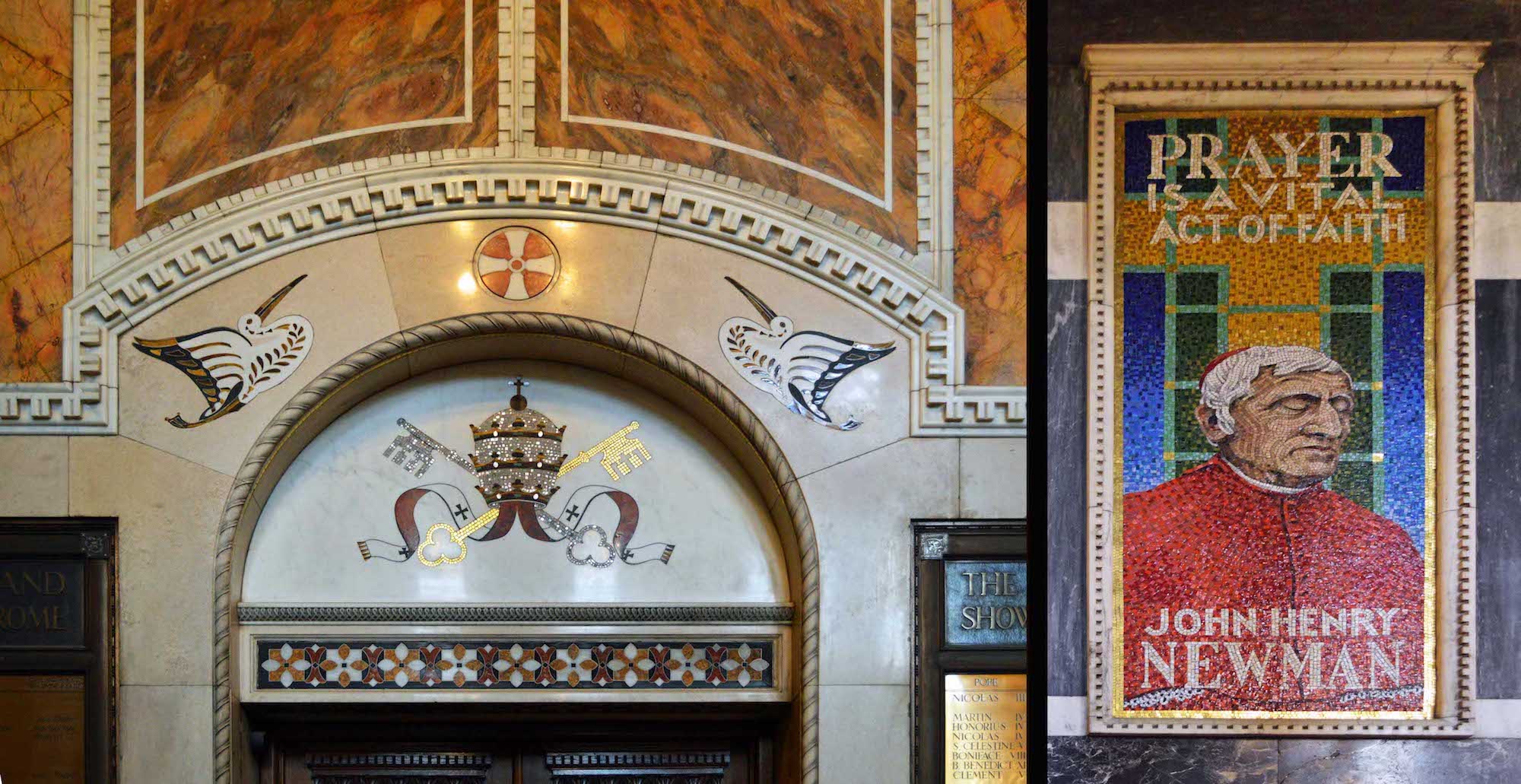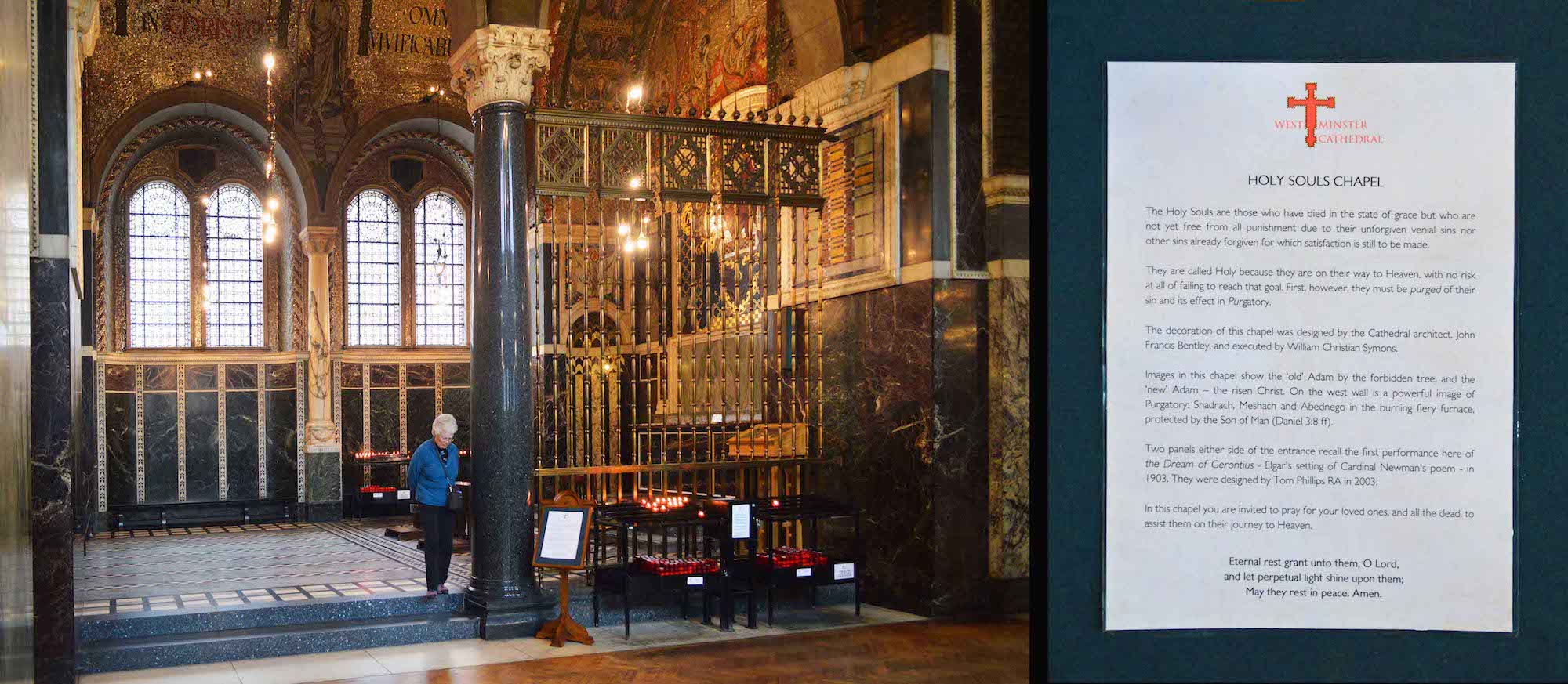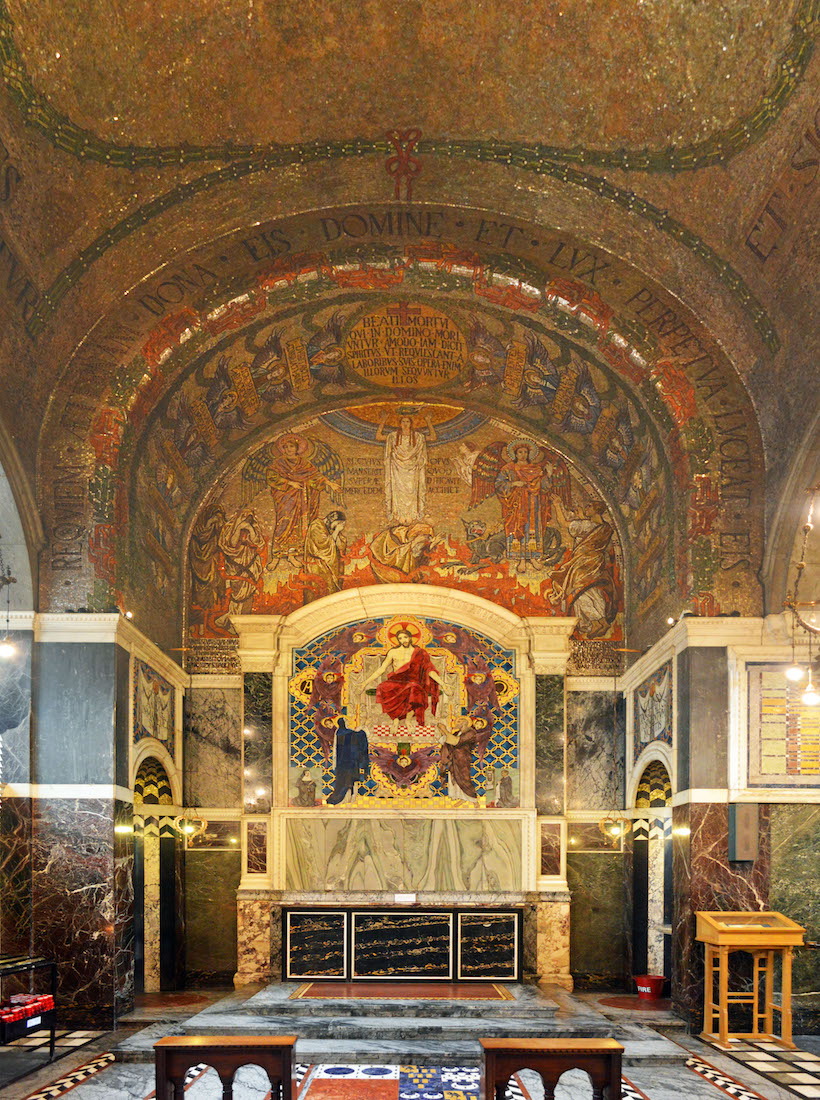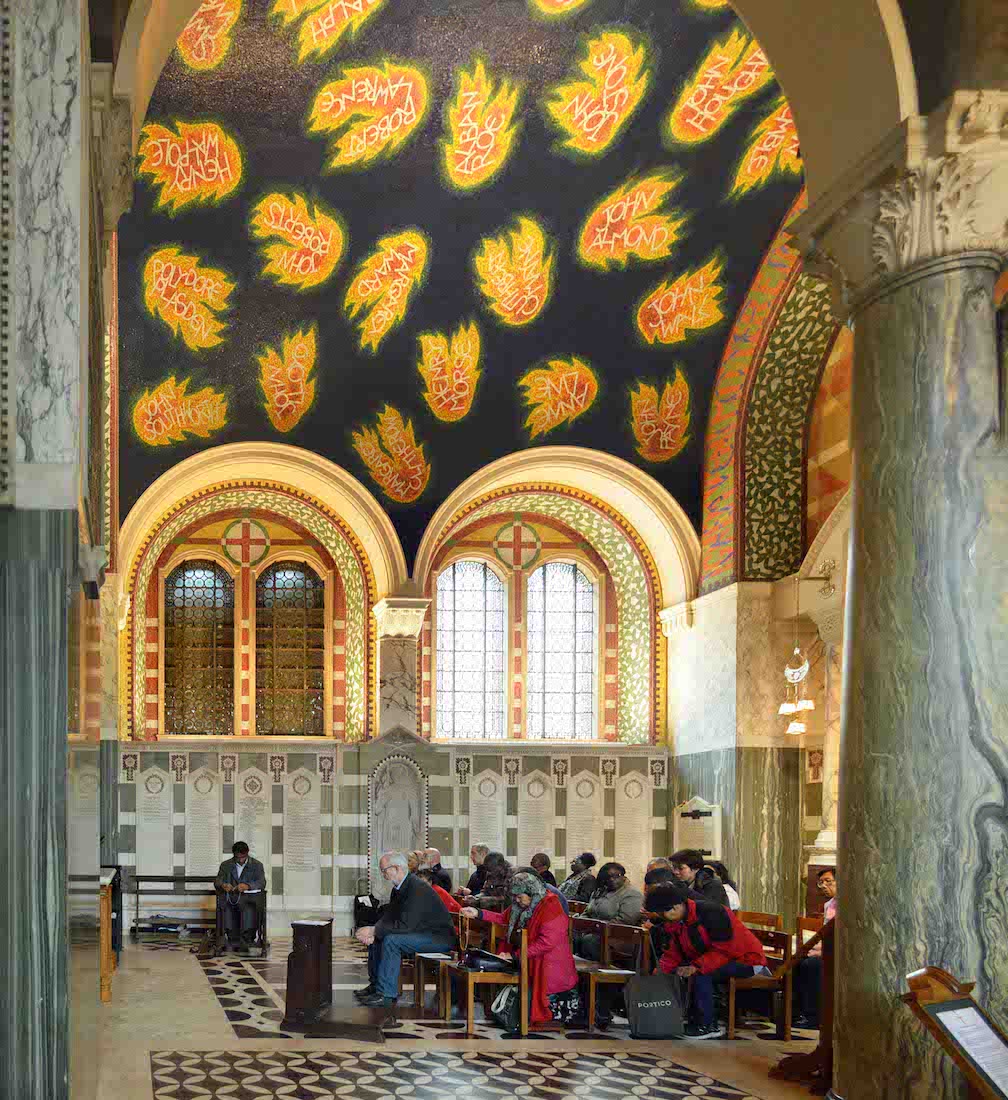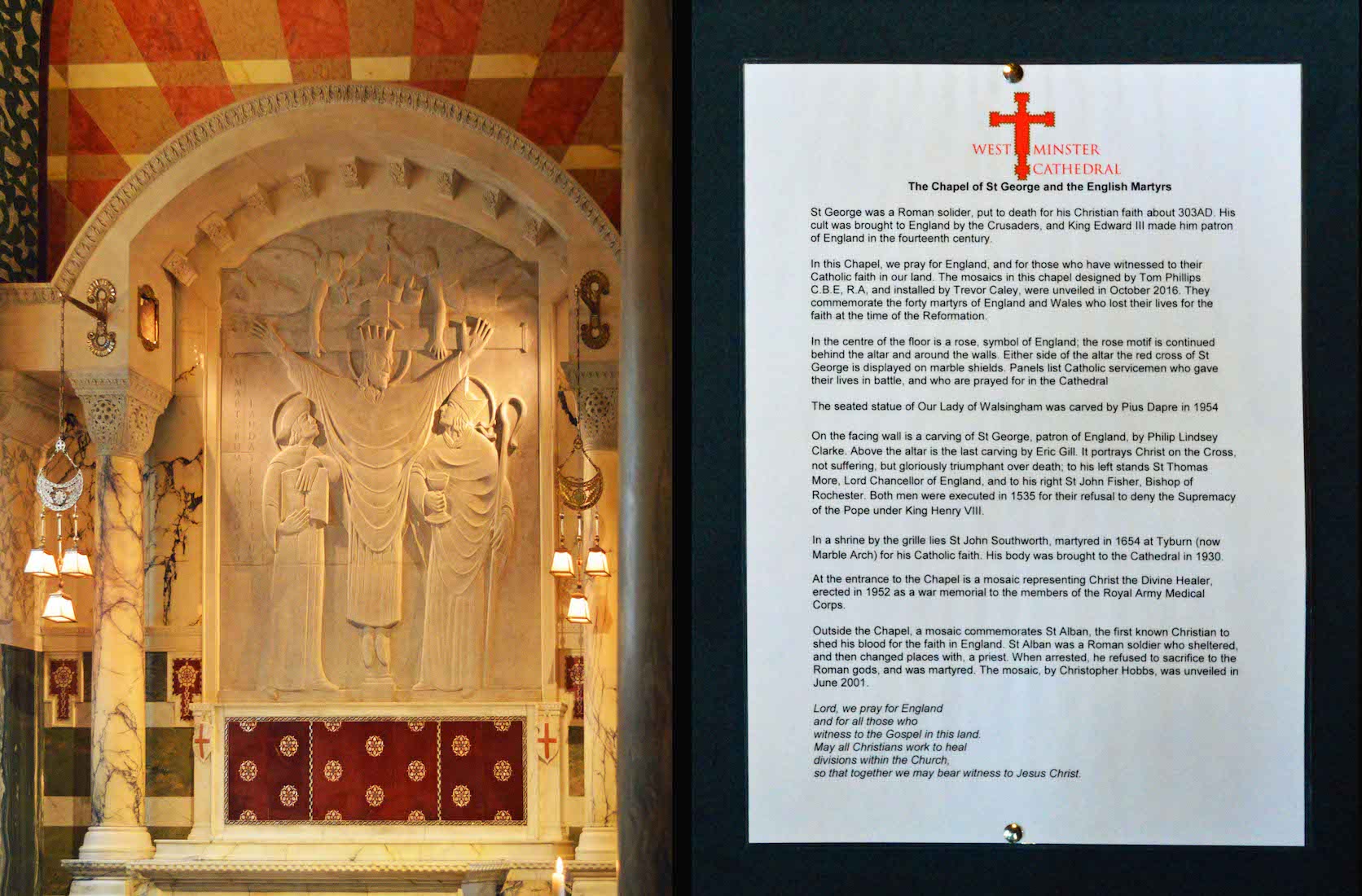1. WESTMINSTER CATHOLIC CATHEDRAL
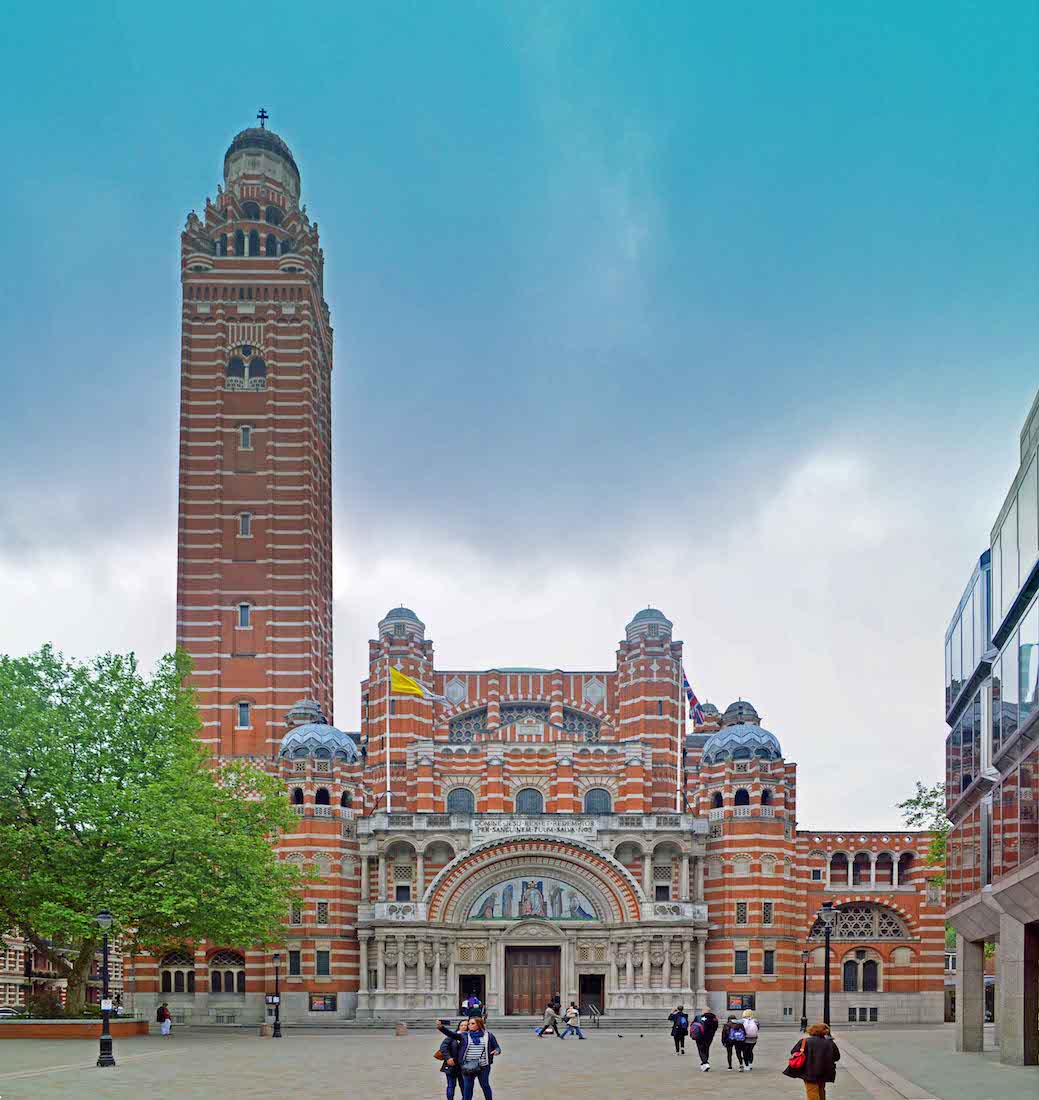
Westminster Cathedral in London (not to be confused with Westminster Abbey) is sited near Victoria Station. It is often missed by tourists which is a pity, as it is an impressive building. Also called the Metropolitan Cathedral of the Precious Blood of Our Lord Jesus Christ, it is the mother church of the Catholic Church in England and Wales. The site on which the Cathedral stands in the City of Westminster was purchased by the Diocese of Westminster in 1885. It is the largest Catholic church in England and Wales and the seat of the Archbishop of Westminster. PLAN
2. SATELLITE VIEW
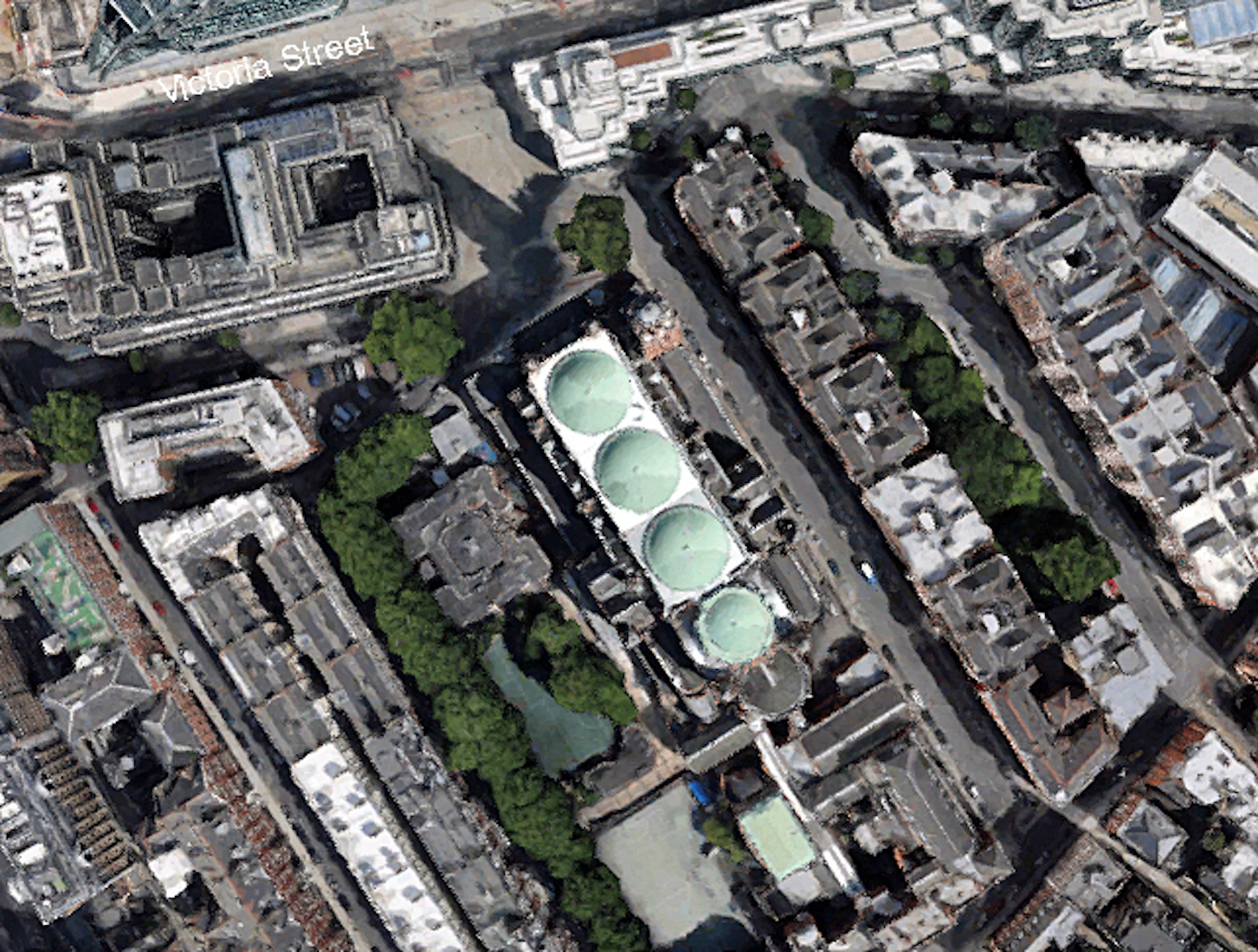
The Cathedral is approached across a spacious forecourt from Victoria Street. We definitely need our liturgical directions here with the spectacular West (capital W) wall facing geographical nor-northwest. The building is in the neo-Byzantine style, with three domes covering the nave and a further smaller dome above the sanctuary. The massive square campanile tower can be seen at top centre. Transepts extend from the East end of the nave..
3. WEST FACE
John Betjeman called the building ‘a masterpiece in striped brick and stone in an intricate pattern of bonding, the domes being all-brick in order to prove that the good craftsman has no need of steel or concrete’. The Cathedral covers a floor area of about 5,017 square metres (54,000 sq ft); the dominating factor of the scheme, apart from the campanile, being a spacious and uninterrupted nave, 18 metres (59 ft) wide and 70 metres (230 ft) long from the narthex to the sanctuary steps.
4. VIEW FROM SOUTHWEST
The Campanile Bell Tower, 273 ft in height, is dedicated to St Edward the Confessor. It has one bell, ‘Edward’, the gift of the Duchess of Norfolk in 1910. The text of the prayer inscribed on the bell is: ‘While the sound of this bell travels through the clouds, may the bands of angels pray for those assembled in thy church. St Edward, pray for England’. The tower has a high viewing platform with views out over London. At right is a view along the South side of the Cathedral.
5. NORTH WALL
In this view we see the North transept, the inevitable scaffolding(!), the regular buttresses, and to the right the columns on either side of the main West entrance. • The land for the Cathedral was acquired in 1884 by Cardinal Manning, having previously been occupied by the second Tothill Fields Bridewell prison. After two false starts, construction started in 1895 under Manning's successor, the third archbishop, Cardinal Vaughan, with John Francis Bentley as architect. The cathedral opened in 1903, a year after Bentley's death.
6. WEST DOOR TYMPANUM AND COLUMNS
The scene in the Tympanum above the West door depicts the Risen Christ surrounded by St Mary, St Jospeh, St Peter and St Edward. The columns shown are to the South of the West door; further columns are to the North. On the columns are eight roundels depicting various saints. Here we see St Thomas (1162) and St Edmund (1234). I wonder who the others are?!
7. FLANKING WEST DOORS
On either side of the central West entry are two smaller doors. Above these are roundels containing the Greek letters Alpha and Omega. This refers to the term Alpha and Omega in the phrase ‘I am the alpha and the omega’ – an appellation of Jesus in the Book of Revelation (verse 1:8). There look to be peacocks on ether side!
8. NAVE
We enter the Cathedral, and before us stretches the nave. I feel overwhelmed: it is huge! There are many chandeliers which give adequte light, but I have an impression of gloominess – expecially looking upwards. The side walls are richly decorated with slabs of coloured marble – mosaics too, as we shall discover. Ahead, the rood cross hangs over the sanctuary, where there stands a baldachin (ciborium) – a solid marble canopy on columns over the altar. .
9. WEST WALL
Turning and looking Westwards along the nave aisle, we see that we have come through a shallow narthex with three arches supporting a gallery. Notice the angels with trumpets on either side of the clock. St Peter sits to the right. The Cathedral actually has three organs. Of these, the renowned Grand Organ, unseen but above the West Door, is used liturgically only before and after High Mass, as well as for organ recitals and the annual Grand Organ Festival. It has four manuals and 81 stops and was built by Henry Willis III from 1922 to 1932.
10. WEST DOOR AND STATIONS
If we had come in through the central West Door, we would have passed two of the fourteen large Stations of the Cross, attached to the supporting columns. These are Stations VII (Jesus falls a second time) and VIII (Jesus comforts the women of Jerusalem). They are in stone bas-relief with colour accents.
11. ST PETER
The statue of St Peter is a copy of the famous statue of St Peter in Rome. Peter is represented holding the keys of the Kingdom (Matthew 16:19). The foot is worn by the hands of countless pilgrims espressing their veneration of the saint.
12. NORTH NAVE
We take a more detailed look around the nave. We notice how the brick and white striping continues inside the Cathedral. To the left is the seated St Peter. The brown double door is the entrance to the campanile. On either side are three brass plaques. Various chapels open out onto the North nave aisle.
13. SOUTH NAVE
Looking across to the South, we are again aware of the brick and white striping, the sheets of coloured marble, and various chapels. The windows all appear to be of clear glass. Notice too the Stations of the Cross on the West sides of the rectangular columns.
14. A CLOSER INSPECTION
Time now to walk around the walls of the nave, looking more closely at the items featured, and the various chapels.
15. LIST OF POPES
The brass plates list all the Popes, beginning with St Peter and St Silvester (314), and continuing through to Pope Francis. Interestingly, various Archbishops and Cardinals are also listed, beginning with Archbishop of Canterbury, St Augustine (597).
16. CAMPANILE DOOR, JOHN NEWMAN
Above the campanile door is a flattened variation of the Papal insignia, with the triple crown, and the gold and silver keys to symbolize ‘loosing and binding’ John Henry Newman, Cong. Orat., (1801 – 1890) was an Anglican priest, poet and theologian and later a Catholic cardinal, who was an important and controversial figure in the religious history of England in the 19th century. He was known nationally by the mid-1830s.
17. HOLY SOULS CHAPEL
The first chapel we come to is the Chapel of the Holy Souls. Catholics believe that the Holy Souls are the dead who wait in Purgatory for final purification before entering Heaven, helped by the prayers of the living. The chapel is lined wth sombre grey marble.
18. CHAPEL ALTAR
In the panel above the altar, Jesus shows his wounds, and St Mary and St Joseph pray to him. Above this is a mosaic in which archangels Michael and Raphael escort souls through the cleansing flames and up to Paradise.
19. CHAPEL OF ST GEORGE AND THE ENGLISH MARTYRS
This is the adjoining chapel as we move Eastwards. The names of the forty Catholic martyrs are emblazoned in mosaic across a dark sky in the chapel vault and their suffering is recalled by a depiction of the Tyburn gallows in marble on the West wall. On the North wall we can see an image of St George. On either side are panels with the names of Catholic servicemen who died in battle.
20. CHAPEL ALTAR
Above the altar is an engraving of Christ on the Cross – not suffering, but victorious. To his left stands St Thomas More, Lord Chancellor of England, and to his right, St John Fisher, Bishop of Rochester. Both men were executed by King Henry VIII in 1535 for their refusal to deny the supremacy of the Pope.


